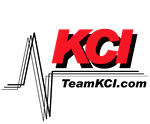Third-Party vs. OEM Maintenance: A Comprehensive Comparison
When it comes to maintaining and supporting IT infrastructure, organizations have two options: third-party maintenance services or original equipment manufacturer (OEM) maintenance. Both options have their advantages and disadvantages, and it’s essential for organizations to understand the differences to make an informed decision. In this article, we will provide a comprehensive comparison of third-party maintenance and OEM maintenance.
One of the primary considerations when comparing third-party and OEM maintenance is the cost. Third-party maintenance services typically offer cost savings compared to OEM maintenance. Third-party providers often have more competitive pricing models, allowing organizations to reduce their maintenance expenses significantly. By opting for third-party maintenance, organizations can redirect the saved funds towards other business initiatives or technology investments. Additionally, third-party providers often offer flexible contracts and customized service levels, allowing organizations to pay only for the services they actually need, rather than being locked into costly OEM contracts with bundled services.
Another important factor to consider is the level of expertise and specialization offered by third-party maintenance providers. These providers typically focus solely on maintenance and support, allowing them to develop deep expertise in the specific technologies they serve. This specialization translates into higher levels of technical proficiency and faster resolution times for issues. Third-party maintenance providers are often more agile and responsive compared to OEMs, as their sole focus is on maintenance, while OEMs have broader responsibilities such as product development and sales.
On the other hand, OEM maintenance can have certain advantages in specific situations. One major benefit is the direct access to OEM resources and support. OEMs have in-depth knowledge about their products and often provide direct access to well-trained engineers who have extensive expertise in their products. This direct access can be advantageous when dealing with complex or highly specialized IT infrastructure. OEMs can also leverage their access to the latest product updates and firmware, ensuring optimal performance and compatibility. Additionally, organizations that prioritize having a close relationship with the equipment manufacturer might prefer OEM maintenance for the peace of mind it provides.
However, it is important to note that while OEM maintenance may offer direct access to the manufacturer, it typically comes at a higher price point. Organizations often find themselves paying a premium for the perceived brand value and direct support. Additionally, OEM maintenance contracts may bundle services that organizations may not require, resulting in unnecessary costs. This lack of flexibility can be a disadvantage for organizations on a tight budget or with a specific set of maintenance needs.
In conclusion, there are pros and cons to both third-party and OEM maintenance options. Third-party maintenance typically offers cost savings, specialized expertise, and flexible service models, making it an attractive option for organizations seeking to optimize their maintenance budget and receive responsive support. OEM maintenance, on the other hand, provides direct access to OEM resources and may be preferred for organizations that value brand reputation and product-specific support. Ultimately, the decision between third-party and OEM maintenance depends on the unique needs and priorities of each organization. It is advisable for organizations to evaluate their requirements, assess the cost-benefit analysis, and consider long-term sustainability before deciding on the appropriate maintenance approach.

